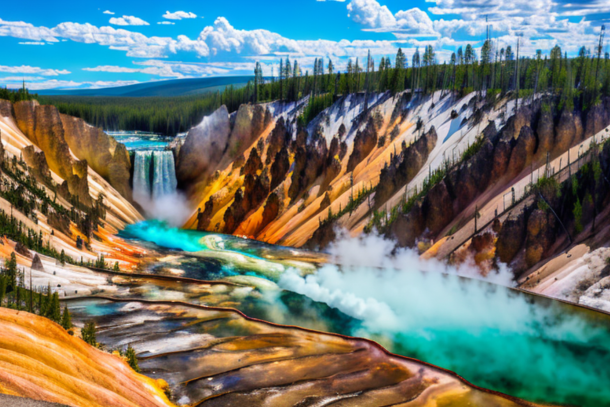Stellar Journeys: Exploring the Life Cycle of Stars Through Stargazing

In the vast expanse of the night sky, stars have woven tales of wonder and curiosity across centuries. These celestial beacons, distant yet alluring, have ignited human imagination, sparking quests for understanding and exploration.
Gazing Up to the Cosmos
From the earliest civilizations who navigated by the stars to modern astronomers who peer through powerful telescopes, the intrigue surrounding stars has only deepened. These distant luminous orbs hold secrets that speak to the very nature of our universe.
Unveiling Cosmic Stories through Stargazing
Stargazing offers more than just a celestial spectacle; it provides us with a time machine to the past and a telescope to the future. Each star is a messenger, whispering tales of its formation, life, and ultimate destiny. Amidst the canvas of darkness, the tapestry of stellar evolution unfolds.
As we embark on this cosmic journey through the life cycle of stars, we find ourselves humbled by the sheer scale of the cosmos and inspired by the intricate dance of celestial bodies. With each twinkle above, we catch glimpses of the universe's narrative—stories of birth, growth, transformation, and sometimes fiery demise.
From the distant corners of the cosmos to our own galaxy's heart, stars have stories to tell, and stargazing is our portal to unraveling these narratives. As we delve into the chapters ahead, we invite you to look up with awe and curiosity, for the night sky is a timeless storyteller, and we are fortunate witnesses to its tales.
Birth of Stars: From Cosmic Nurseries to Stellar Nurseries
In the cosmic dance of creation, nebulae emerge as the cradles of stars, where the canvas of the universe comes alive with the promise of new celestial beings. These immense clouds of gas and dust are the alchemical grounds where the raw materials of stars congregate.
Nebulae as Stellar Nurseries
Within the wisps of nebulae, molecules clump and swirl, gathering density under the gentle pull of gravity. These interstellar nurseries serve as the foundation for the birth of stars, where vast expanses of nothingness give rise to luminous beacons that will shape galaxies.
The Interplay of Gravity, Gas, and Dust Leading to Protostars
As gravity weaves its invisible threads, gas and dust particles drawn together collide and meld, forming intricate networks. Over millennia, these pockets of matter coalesce into protostars—the infant forms of what will eventually become blazing suns. The interplay between these elements dictates the path of stellar creation, a dance choreographed by the fundamental laws of physics.
The journey from nebulae to protostars is a testament to the extraordinary forces at play in the cosmos. It's a symphony of attraction and repulsion, a ballet of particles and energy that sets the stage for the grand performance of a star's life cycle.
Proto to Main Sequence: A Star's Adolescence
As cosmic cradles birth protostars, an intricate dance unfolds. From the swirling cocoon of gas and dust emerges a nascent star, pulsating with potential. This journey marks the star's adolescence—a period of transformation leading to its eventual place on the cosmic stage.
Formative Forces at Play
Gravity, the unseen hand of the universe, relentlessly pulls matter inward, compressing it with immense pressure. The core temperature begins to rise, eventually reaching a point where nuclear fusion ignites—a celestial furnace kindling hydrogen into helium. This delicate equilibrium between gravity's inward pull and the fiery force of nuclear fusion establishes the star's balance.
Main Sequence Star: The Cosmic Symphony
Upon achieving this equilibrium, the protostar earns its place as a main sequence star—the most common stellar category. These stars settle into a harmonious existence, radiating energy in the form of light and heat. A tango between gravity's squeeze and nuclear fusion's push sustains the star, maintaining its luminosity and temperature.
Variability of Main Sequence Stars
Yet, within the vast tapestry of the cosmos, even main sequence stars possess unique qualities. Their lifespan, size, and colour are defined by their mass—the very attribute that shapes their stellar journey. Some stars blaze brightly but are short-lived, while others burn more steadily, enduring for billions of years.
Unlocking the Secrets of Stellar Maturation
Observing main sequence stars offers astronomers a glimpse into the past. Since these stars emit light over vast distances, we see them not as they are now, but as they were eons ago. This phenomenon serves as a time machine, enabling us to study the universe's history by studying these celestial beacons.
Within this phase of stellar evolution, the cosmos delicately weaves the intricate threads that bind stars to the grand narrative of the universe. It's a dance that spans eons, witnessed only by those who cast their gaze heavenward—a dance of gravity, fusion, and the birth of light.
Stellar Evolution: Diverse Paths for Different Stars
The life journeys of stars are as diverse as the constellations they inhabit. The fate of a star is intricately woven into its mass and composition, leading to an array of captivating cosmic phenomena.
Guided by Mass: Varied Destinies
Just as humans chart different paths in life, stars too embark on distinct cosmic trajectories determined by their mass. Low- and medium-mass stars follow a route that differs from that of their massive counterparts. This mass-dependent divergence is a testament to the grand orchestration of the universe.
The Evolutionary Phases Unveiled
The stages of stellar evolution paint a breathtaking portrait of change and transformation. Red giants, with their majestic, bloated atmospheres, are the evolved forms of stars like our Sun. Then, we encounter white dwarfs, the remnants of low-mass stars that have exhausted their nuclear fuel. These incredibly dense objects are a fitting farewell for certain stars, casting a soft glow in the darkness.
However, the cosmic stage also features a more dramatic final act. The grandeur of a supernova is a blaze of glory that marks the end of massive stars' lives. The unfathomable energy released in a supernova explosion can outshine an entire galaxy for a brief moment, scattering elements forged within the star across the cosmos. This explosive exit, while cataclysmic, contributes to the universe's ongoing evolution.
Interplay of Forces and Physics
The intricacies of stellar evolution unveil the interconnected dance of gravitational forces, nuclear reactions, and the balance between them. These forces shape the destiny of a star, determining whether it will quietly fade or blaze in a glorious spectacle.
Through stargazing, we not only glimpse the past of stars but also catch a glimpse of their future. Each observation is a fragment of cosmic history, revealing the ongoing saga of stars' evolution and the profound interconnectedness of the universe's elements.
Supernova: The Explosive Finale
In the cosmic ballet of stars, a supernova is a grand crescendo—a brilliant explosion that captivates the imagination and leaves a profound mark on the universe. This awe-inspiring phenomenon is both a celestial spectacle and a cosmic alchemist, forging elements that enrich the cosmos in ways beyond measure.
The Fiery Drama Unfolds
In the heart of a dying massive star, the core collapses under its own weight, triggering a cataclysmic explosion known as a supernova. This extraordinary event outshines entire galaxies, briefly outshining billions of stars combined. Its brilliance is the culmination of processes that have been playing out for millions of years, releasing unfathomable energy.
Forging Cosmic Crucibles
Beyond its luminous display, a supernova's true legacy lies in its role as a cosmic forge. Within the searing heat of the explosion, elements heavier than iron are forged through a process known as nucleosynthesis. These elements, such as gold, silver, and uranium, are created in the intense conditions of the supernova and scattered into space when the explosion occurs.
Enriching the Cosmos
The aftermath of a supernova disperses these newly formed heavy elements into the cosmos, seeding future generations of stars, planets, and even life itself with the building blocks of complexity. Our very existence is indebted to these cosmic detonations, which have sculpted the periodic table and shaped the diversity of elements that form the bedrock of our universe.
A Tapestry of Cosmic Evolution
Supernovae, with their colossal explosions and transformative power, are woven intricately into the fabric of cosmic evolution. They mark the end of some stars' journeys, while simultaneously seeding the birth of new stars and planetary systems. They are the architects of change, driving the dynamics of galaxies and contributing to the rich tapestry of the universe's story.
Neutron Stars and Black Holes: Stars' Final Breath
In the twilight of their existence, massive stars undergo astonishing transformations, leaving behind enigmatic remnants that defy comprehension: neutron stars and black holes. These remnants, born from the tumultuous supernova explosions, push the boundaries of our understanding and challenge the limits of physics.
Neutron Stars: Beyond Dense
Imagine a celestial object so dense that a teaspoonful would weigh billions of tonnes on Earth. Neutron stars are precisely that—a result of a star's core collapsing under its own gravity. In this remarkable state, protons and electrons merge, forming a nucleus packed with neutrons. These remnants, no larger than a city, pulsate with intense magnetic fields, emitting beams of radiation detectable across vast distances. Pulsars, rapidly rotating neutron stars, act as cosmic lighthouses, sweeping their beams of energy through the cosmos.
Black Holes: The Abyss of Space-Time
At the pinnacle of stellar evolution lies the enigma of black holes. Born when the remnants of massive stars exceed a critical mass, their gravitational pull becomes so immense that even light cannot escape—a cosmic abyss. Space-time itself warps and bends in their vicinity, creating a singularity of infinite density. While their very nature challenges comprehension, black holes play an essential role in shaping galaxies and the cosmos at large.
The cosmos' most intriguing mysteries lie in these final chapters of a star's life. Their existence was predicted by theory, but their profound implications are still being unravelled. Through observation and theoretical exploration, scientists strive to peer into the heart of these cosmic enigmas, broadening our knowledge of the universe's most extreme phenomena.
Cosmic Recycling: Stars' Contributions to the Universe
As the cosmic crucibles where elemental alchemy takes place, stars are not only celestial beacons but also factories of the universe's building blocks. Their fiery cores fuse hydrogen and helium into heavier elements through nuclear reactions, creating a tapestry of elements that shape the cosmos.
Elemental Forging in Stellar Ovens
Deep within stars, nuclear fusion transmutes primordial hydrogen and helium into a kaleidoscope of elements, ranging from carbon and oxygen to silicon and iron. These elements are released into space during the later stages of a star's life cycle, enriching the interstellar medium with their elemental legacy.
The Stellar Winds of Creation and Destruction
As massive stars reach their final stages, they unleash powerful stellar winds that scatter these newly formed elements into the cosmic void. Supernova explosions further propel these elements into space, scattering them across galaxies and beyond. In doing so, stars become cosmic benefactors, dispersing the very building blocks of life itself.
Shaping Galaxies and Beyond
Stars play a pivotal role in shaping galaxies and the universe's evolution. Their elements form the raw materials for new stars, planets, and even life. Planetary systems are born from the remnants of earlier stars, encapsulating the stellar legacy within their orbits. Thus, the evolution of the cosmos is a symphony composed of starlight and stardust.
The Continuum of Cosmic Existence
As we peer into the night sky, we gaze upon stars that might have long faded away, their light a timeless messenger from the past. In their spectral signatures, we discern the very composition of the universe, tracing its evolution and growth. Stargazing becomes a journey not just through space but also through time—a testament to the interconnectedness of all cosmic phenomena.
In unravelling the tale of stars, we deepen our appreciation for their significance beyond their celestial radiance. They are the cosmic alchemists, the architects of galaxies, and the beacons that illuminate the grandeur of the universe.
Stargazing as a Time Machine: Peering into the Past
The night sky, speckled with countless stars, is more than a breathtaking view; it's a portal to the past, a celestial tapestry woven with threads of history. Through the lens of a telescope or the unaided eye, observing distant stars offers us a profound opportunity to step back in time.
A Glimpse into the Cosmos' Early Days
As we train our gaze on a distant star, we're not merely witnessing its current state; we're delving into its history. Light, despite its incredible speed, takes time to travel across vast cosmic distances. This means that the light we see today from a star might have started its journey eons ago. As we marvel at the twinkling points of light, we're actually peering back into a bygone era.
Ancient Stars: Portals to the Universe's Birth
Some stars, older than the human species itself, are time capsules from the universe's infancy. They provide a rare window into conditions that prevailed during the early epochs. By studying these ancient luminaries, astronomers glean insights into the formation of galaxies, the birth of elements, and the universe's evolution.
A Journey Across Cosmic Eras
Stargazing becomes an intricate dance across epochs, a visual journey through the eons. Each star we see, whether it's a radiant beacon or a faint glimmer, whispers stories of its birth, evolution, and eventual fate. By connecting with these celestial storytellers, we come to understand our place in the grand cosmic narrative.
The Night Sky as a Classroom: Learning Astronomy through Observation
Stargazing isn't just a serene pastime; it's an open invitation to immerse ourselves in the universe's intricate mechanics. As we gaze upwards, we're not just witnessing points of light; we're witnessing a cosmic ballet, a play of forces, energies, and phenomena that shape our universe.
Unveiling Universe's Mechanics
By observing the night sky, we're privy to the secrets of gravity, nuclear fusion, and stellar dynamics. It's like peering behind the curtain of the cosmos, as we watch stars form, explode, and evolve. The night sky becomes a canvas where galaxies swirl, planets wander, and the life cycles of stars play out.
Accessible Tools for Amateur Astronomers
The beauty of stargazing is its accessibility. Armed with nothing more than a pair of binoculars, star maps, and enthusiasm, amateur astronomers can embark on their celestial journey. Star maps guide us through constellations, while binoculars reveal clusters, nebulae, and even distant galaxies. Telescopes, though more advanced, open up new realms of exploration.
Whether it's identifying the Orion Nebula, tracking the International Space Station's passage, or following the phases of Venus, the night sky offers lessons that no classroom can replicate. It's an ever-changing tableau, teaching us patience, humility, and the boundless wonders that exist beyond our world.
In this celestial classroom, everyone, regardless of age or expertise, can learn. By embracing stargazing, we open a gateway to understanding the universe's story, its birth and demise, its constants and anomalies. It's a classroom without walls, where the only requirement is a curious mind and a willingness to look up.
Conclusion
Gazing up at the star-studded canvas of the night sky, we find ourselves humbled by the silent spectacle of stellar evolution. Each twinkle holds within it a story—a tale of birth, life, and sometimes cataclysmic death. As we peer through the veil of time, stargazing becomes a bridge between our quest for knowledge and the cosmos' enigmatic secrets.
Stargazing: An Intimate Connection with the Cosmos
The act of observing stars, though simple in practice, is an intimate communion with the universe's past, present, and potential future. With every glint of light that reaches our eyes, we become witnesses to the saga of stars—how they are born from the cosmic fabric, dance through their stages of existence, and eventually surrender to the inexorable pull of cosmic forces.
Journey Through Time and Space
Readers, as you ponder the mysteries of the cosmos, remember that in each star's shimmer resides a chronicle of cosmic evolution. By embracing stargazing, you embark on a journey not only through space but also through time. With each constellation charted, with each distant star you glimpse, you're delving into the very heart of existence, where time and space entwine in an eternal dance.
So, whether you're using binoculars or a telescope, lying on a blanket in your backyard or joining an astronomy club, let the wonders of stargazing be your gateway to understanding the life cycles of stars. Through this journey, you'll not only enrich your own understanding of the cosmos but also join the generations of stargazers who've stood in awe of the celestial symphony above.
Related to this article are the following:
I do hope you have enjoyed this article and hope that you will subscribe to my newsletter so you can get the latest information about all things naturally relaxing.
Stay in touch, join the Naturally Relaxing Newsletter
Newsletter Signup
Post Your Comments
or post as a guest
Be the first to comment.
Latest articles in Nature

Exploring the UK’s Most Serene Coastal Trails

The Healing Power of Nature: Forest Bathing Explained

Sustainable Gardening: Tips for Growing Your Own Herbs

The Yellowstone Supervolcano: A Sleeping Giant

The Lost City of Atlantis: A Geological Mystery






